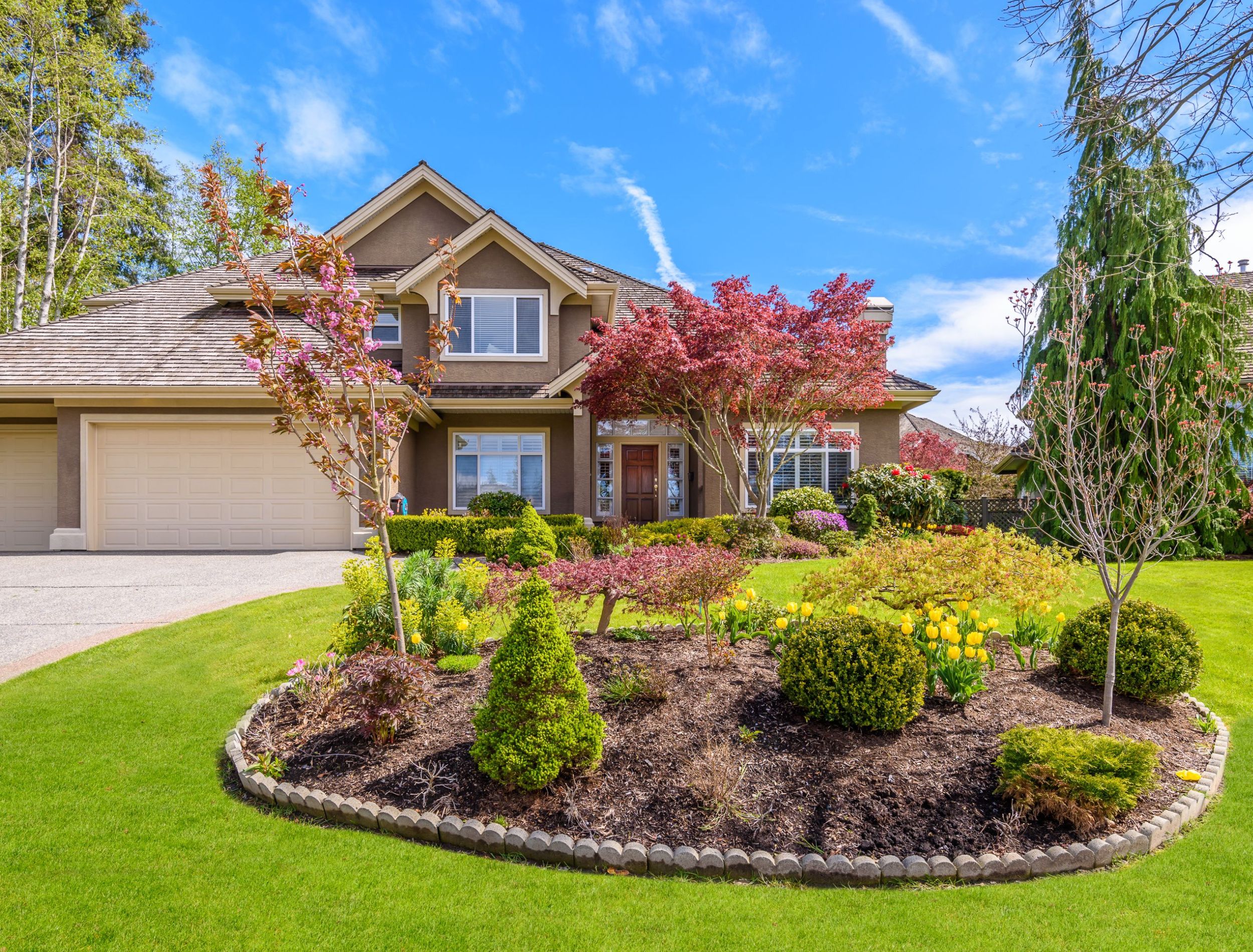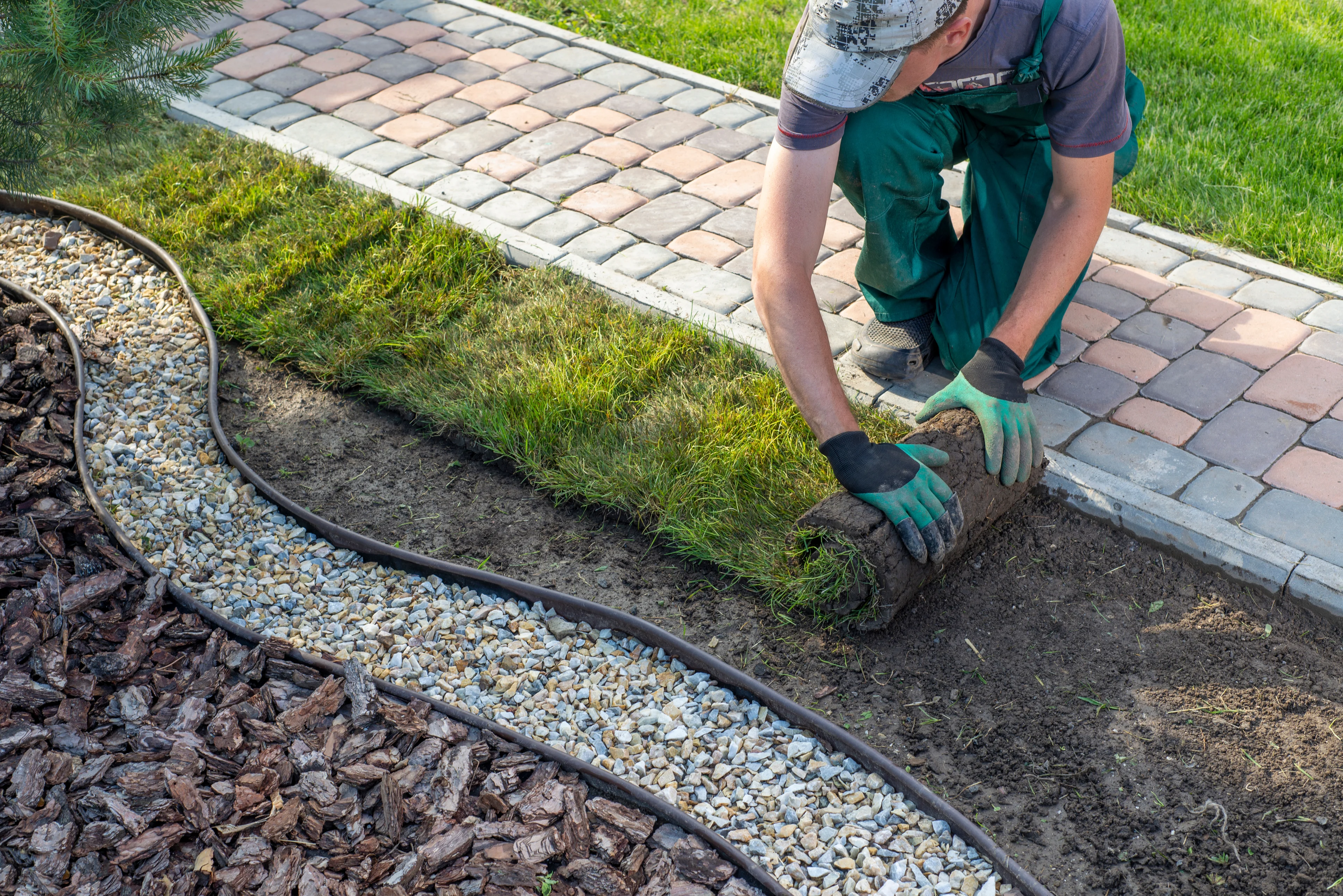Discover Various Sorts Of Landscaping That Can Transform Your Exterior Room
Landscaping offers as a crucial aspect in enhancing outside rooms, supplying different styles that provide to functional and visual requirements. Additionally, sustainable methods and outdoor living rooms contribute to both ecological stewardship and way of living improvement.
Traditional Yard Landscaping
Traditional yard landscape design personifies timeless sophistication and a sense of order, commonly characterized by in proportion layouts and classic plant selections. This style usually emphasizes organized layouts, including geometric patterns and very carefully polished bushes that develop a harmonious aesthetic equilibrium (Las Vegas Landscaping). Walkways and paths, frequently lined with stone or brick, guide site visitors with the yard, boosting the total aesthetic

Water attributes, such as fountains or decorative fish ponds, play a considerable role in conventional landscaping, giving a serene centerpiece and improving the sensory experience. Additionally, traditional garden accessories, including sculptures and urns, add to the improved ambience.
Inevitably, typical garden landscape design is a party of nature's charm with a well-ordered, aesthetically pleasing style, inviting relaxation and reflection while recognizing historical gardening practices. This technique creates an inviting outdoor area that reflects both design and refinement.
Modern Hardscape Layouts
Modern hardscape develops mark a separation from the structured aesthetics of standard landscaping, focusing instead on clean lines and ingenious materials. This modern method emphasizes the usage of hard materials such as concrete, metal, and rock to develop aesthetically striking and useful outside areas.
Incorporating elements like outdoor patios, walkways, and maintaining wall surfaces, contemporary hardscape designs improve the functionality of outdoor areas while preserving a minimal visual. Geometric shapes and unbalanced designs are popular, enabling unique arrangements that mirror personal style. The combination of lights features, such as LED strips and spotlights, boosts the ambiance and safety and security of these spaces, producing an inviting atmosphere during the evening.
Cutting-edge products such as absorptive pavers are obtaining traction, using both toughness and environmental benefits by enabling water to drain pipes through the surface area. This not just reduces drainage but additionally assists preserve a much healthier landscape.
Sustainable Landscaping Practices
Integrating sustainable landscape design techniques is essential for developing eco-friendly outside areas that prosper in time. These practices not just improve the visual charm of a landscape however likewise contribute to eco-friendly equilibrium and preservation.
One of the key tenets of sustainable landscaping is the use of indigenous plants. These species are adjusted to the regional climate and soil conditions, requiring less water and upkeep contrasted to non-native ranges. In addition, executing xeriscaping techniques can dramatically lower water use deliberately landscapes that are drought-resistant.
Another critical aspect is using natural horticulture techniques, which include preventing artificial fertilizers and pesticides. Rather, all-natural options such as garden compost and integrated insect monitoring can help preserve soil health and wellness and reduce chemical runoff.
Additionally, including rainfall gardens and permeable paving can assist in stormwater management, enabling rainwater to infiltrate the ground as opposed to contributing to drainage. This not just minimizes disintegration however likewise replenishes groundwater supplies.
Lastly, utilizing recycled products in hardscaping and promoting biodiversity through pollinator gardens can produce a habitat for regional wild animals, fostering a harmonious connection in between nature and outdoor spaces. By welcoming these sustainable practices, house owners can develop lovely landscapes that support both the setting and their individual enjoyment.
Outdoor Living Areas
Producing an inviting outside space complements sustainable landscaping initiatives by supplying practical areas for leisure and amusement while enhancing the total charm of the landscape. These areas can range from easy patio areas to elaborate outside cooking areas, each designed to balance with the natural environments.

Including aspects such as fire pits or exterior fire places not only expands use into cooler months yet also works as a focal factor for gatherings. Landscape. Additionally, integrating native plants and attractive landscaping attributes, such as water components or rock pathways, can effortlessly blend these rooms with the existing setting
Efficient lighting is vital for enhancing ambiance and safety and security during evening use. By attentively developing outdoor living areas, homeowners can produce multifunctional areas that advertise outdoor enjoyment while supporting sustainable methods and preserving the integrity of the bordering ecosystem.
Vertical and Roof Gardens
Vertical and rooftop gardens represent ingenious services for maximizing limited area while improving the visual and eco-friendly value of metropolitan atmospheres. These garden types utilize upright surfaces and roofs to grow a variety of plants, transforming or else underutilized locations right into lively environment-friendly areas.
Upright yards, often referred to as living wall surfaces, utilize specialized frameworks to support plants, enabling imaginative layouts that can consist of herbs, flowers, and also small bushes. This approach not just includes visual rate of interest however additionally enhances air quality and reduces metropolitan heat impacts.
Rooftop yards, on the other hand, give a distinct opportunity to produce a rich atmosphere atop buildings, providing advantages such as boosted insulation, stormwater monitoring, and increased biodiversity. They can function as recreational rooms, neighborhood gardens, or metropolitan ranches, advertising sustainable techniques in densely populated locations.
Both upright and rooftop gardens need cautious preparation and upkeep, consisting of factors to consider for weight plant, irrigation, and tons selection. When implemented thoughtfully, they can dramatically enhance urban landscapes, making cities much more comfortable, lasting, and cosmetically pleasing. Embracing these gardening approaches can cause a greener, much healthier future for city dwellers.
Verdict
In conclusion, discovering diverse landscaping types can dramatically enhance exterior spaces, providing both visual appeal and capability. Standard garden landscape design supplies timeless beauty, while modern hardscape designs present contemporary sophistication. Sustainable methods add to environmental conservation, and exterior space foster relaxation and social interaction. In addition, upright and rooftop yards address metropolitan room constraints, advertising greenery in largely inhabited locations. Jointly, these landscape design approaches create unified settings that accommodate various requirements read more and choices. this website
Landscaping offers as an important element in improving outdoor areas, providing various designs that provide to visual and functional demands. In addition, lasting methods and exterior living spaces contribute to both ecological stewardship and way of life enhancement.In conclusion, exploring diverse landscaping types can significantly enhance outdoor spaces, supplying both visual appeal and performance. Lasting methods contribute to ecological conservation, and exterior living spaces foster relaxation and social communication. Furthermore, upright and rooftop gardens resolve metropolitan room constraints, promoting plant in densely inhabited areas.